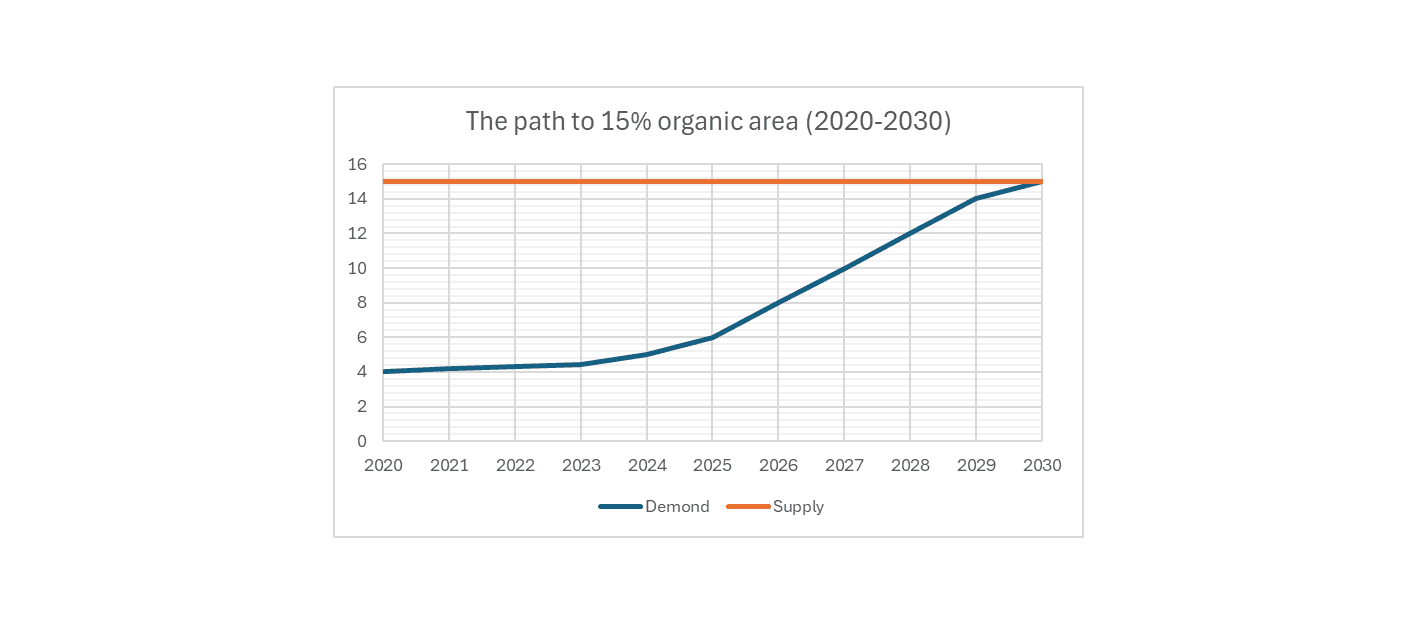
Organic Fertilizers 2025: what will the price do?
Currently, the question is what the price of fertilizers will do in 2025. Delayed logistics may normally depress prices, low forecast volumes reduce inventory, increasing demand later in the season may lead to scarcity and price increases. What do you think?
Tension between ambition and reality
The wider organic market is currently stagnant (around 3% of food spending), despite growing calls for more sustainable food. Consumers do want to buy more environmentally conscious, but often opt for cheaper alternatives in times of inflation. This inhibits conversion to organic and thus also slows growth in demand for organic fertilizers.

Demand continues to rise slightly, while supply declines due to delays and low forecasts. This could increase price pressure once demand really picks up. (Illustrative data)
Towards 15% Organic Farmland
The Netherlands aims for 15% organic farmland by 2030. But without stable demand, it remains difficult for farmers to switch and for fertilizer suppliers to balance supply and price. More transparency through true-value models can help consumers choose more consciously. In addition, retailers and producers can offer organic as a standard, so consumers do not have to actively choose a more expensive option all the time.

Current growth is limited. Without additional incentives in the chain and among consumers, it is very difficult to achieve the ambition. (Illustrative data)
Whether the price for organic fertilizers goes up or down is closely linked to market acceptance, logistic challenges and consumers’ willingness to pay for sustainability. Only when supply and demand are better balanced and the chain works together, can price fluctuations decrease and will the market really grow towards sustainable ambitions.
Feel free to share your expectations with us by contacting us.






